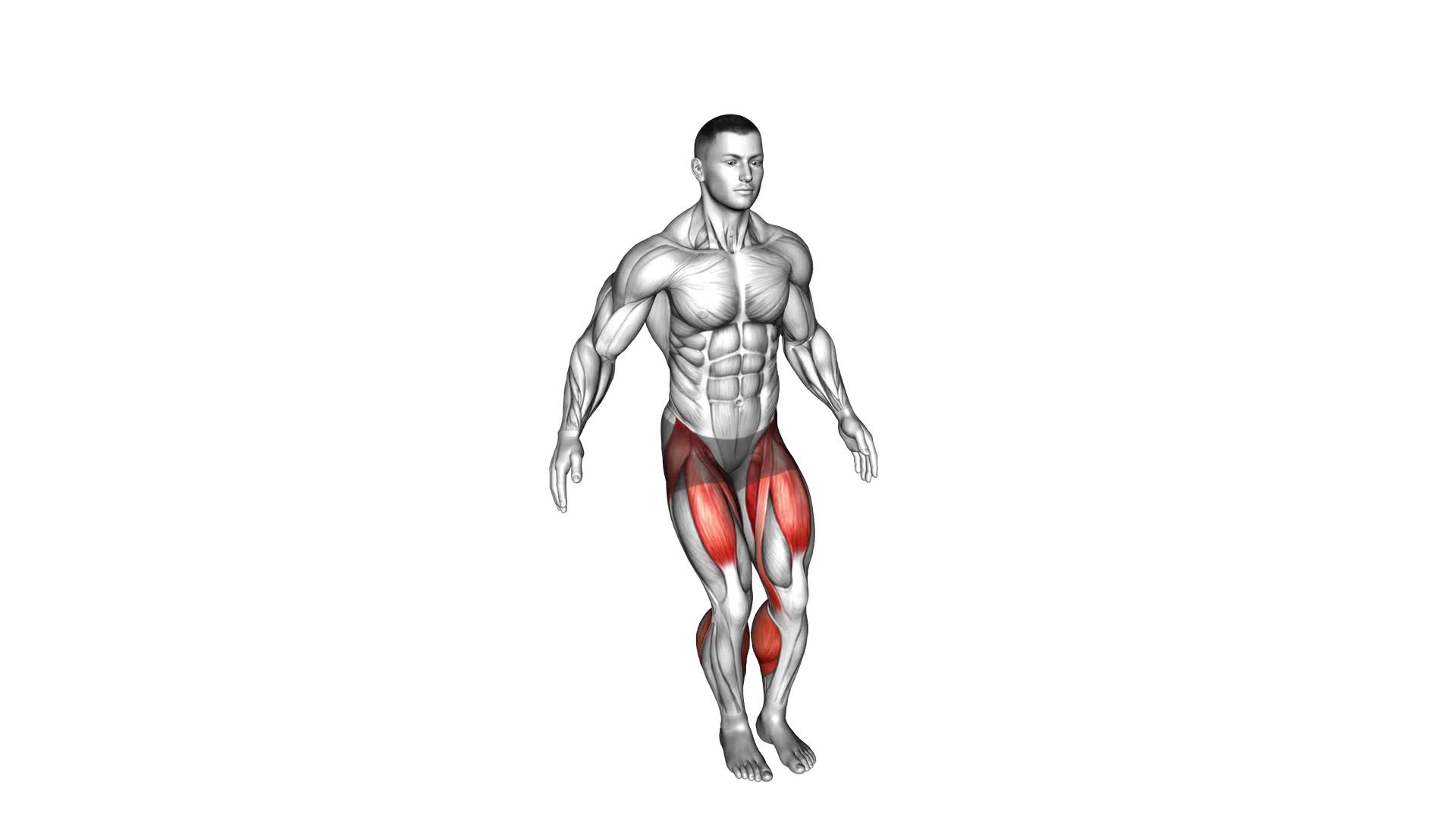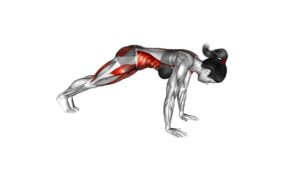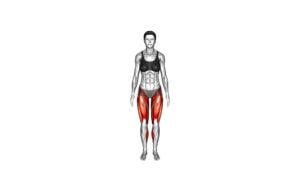Side to Side Hop – Video Exercise Guide & Tips

Are you looking for an effective exercise that will challenge your muscles and boost your cardio? Look no further than the side to side hop! This dynamic movement targets your legs, glutes, and core while improving agility and coordination.
Watch This Exercise Video
In this article, we'll provide a video exercise guide and share tips to help you master proper form, avoid common mistakes, and increase the intensity of your side to side hop workout.
Get ready to hop your way to fitness!
Key Takeaways
- The side to side hop targets multiple muscle groups and improves cardiovascular endurance.
- Proper form and technique include maintaining a neutral spine, aligned knees and toes, and engaging core muscles.
- Variations and modifications of the side to side hop include single-leg hops, weighted hops, resistance band hops, and Bosu ball hops.
- Common mistakes to avoid include landing with locked knees, leaning forward or backward, and neglecting warm-up and cool-down.
Benefits of the Side to Side Hop
To maximize your workout, the side to side hop offers a dynamic and effective way to target multiple muscle groups. This exercise provides numerous benefits for your body and fitness goals.
One of the key advantages of the side to side hop is its ability to improve your cardiovascular endurance. By engaging in this high-intensity exercise, you can elevate your heart rate and increase your lung capacity, leading to improved overall cardiovascular health.
Additionally, the side to side hop helps to strengthen and tone your lower body muscles, including your quadriceps, hamstrings, glutes, and calves. This exercise also engages your core muscles, helping to improve stability and balance.
To achieve the benefits of the side to side hop, it's crucial to maintain proper form. Start by standing with your feet shoulder-width apart, knees slightly bent, and arms at your sides. From here, jump laterally to the side, landing softly on the balls of your feet. Ensure that your knees are aligned with your toes and that you maintain a neutral spine throughout the movement. Repeat the hop on the other side, alternating back and forth.
Proper Form and Technique
To maintain proper form and technique during the side to side hop, focus on engaging your core muscles and keeping a neutral spine throughout the movement. This will help you maximize the benefits of the exercise and reduce the risk of injury. Common mistakes to avoid include hunching your back, rounding your shoulders, and leaning too far forward or backward. These errors can put unnecessary strain on your spine and decrease the effectiveness of the exercise.
To ensure proper form, start by standing with your feet shoulder-width apart and your knees slightly bent. As you hop from side to side, imagine a straight line running through your head, spine, and tailbone. Keep your core muscles tight to stabilize your body and prevent excessive twisting or swaying. Also, be mindful of your foot placement. Land softly on the balls of your feet and push off using your leg muscles.
To increase the intensity of the side to side hop, you can try adding a jump or using a higher platform. However, always prioritize maintaining proper form over increasing intensity. Gradually increase the difficulty level as your strength and coordination improve. Remember to listen to your body and never push yourself to the point of pain or discomfort.
Variations and Modifications
To explore different ways to challenge yourself and modify the side to side hop, consider incorporating variations and modifications into your workout routine. Here are some alternative exercises and equipment options that can help you switch things up and keep your workouts fresh:
- Single-leg side to side hop: Instead of using both feet to hop from side to side, try doing the exercise on one leg. This will increase the intensity and engage your core and stabilizer muscles even more.
- Weighted side to side hop: Hold a dumbbell or kettlebell in each hand while performing the side to side hop. Adding weight will increase the resistance and make the exercise more challenging for your lower body.
- Resistance band side to side hop: Attach a resistance band around your ankles or thighs and perform the side to side hop. The band will provide additional resistance, targeting your glutes and outer thighs.
- Bosu ball side to side hop: Place a Bosu ball on the ground with the flat side up. Hop from side to side, landing on the ball with each jump. This variation will challenge your balance and stability.
Common Mistakes to Avoid
When performing the side to side hop exercise, it's important to be aware of the common mistakes that can occur. Incorrect form can lead to potential dangers and injuries, so it's crucial to maintain proper technique.
To avoid these mistakes, focus on engaging your core, keeping your movements controlled and balanced, and landing softly to minimize impact on your joints.
Incorrect Form Dangers
Are you aware of the potential dangers of using incorrect form while performing the Side to Side Hop exercise? It's important to be mindful of your form to prevent injuries and maximize the benefits of this exercise.
Here are some common mistakes to avoid and injury prevention strategies:
- Landing with locked knees: This puts excessive strain on your joints. Remember to bend your knees slightly to absorb the impact.
- Leaning forward or backward: Maintaining a neutral spine is crucial. Avoid leaning in any direction to prevent strain on your lower back.
- Lack of control: Moving too quickly or without control can lead to accidents. Focus on maintaining proper form and control throughout the exercise.
- Neglecting warm-up and cool-down: Skipping warm-up exercises and cool-down stretches can increase the risk of injury. Take the time to properly warm up your muscles before starting the Side to Side Hop and cool down afterward to prevent muscle soreness.
Proper Technique Tips
To prevent injury and maximize the benefits of the Side to Side Hop exercise, it's important to focus on proper technique and avoid common mistakes.
First, make sure to maintain proper form by keeping your feet hip-width apart and your knees slightly bent. This will help you generate power and stability throughout the movement.
Secondly, avoid excessive lateral movement, as this can strain your knees and ankles. Instead, focus on a controlled and controlled side-to-side motion.
Lastly, always land softly on the balls of your feet to absorb the impact and reduce the risk of injury.
Tips for Increasing Intensity
To increase the intensity of your side to side hops, there are a few advanced intensity techniques you can try.
One option is to add resistance by using ankle weights or holding a medicine ball while performing the exercise.
Another strategy is to incorporate progressive overload by gradually increasing the number of hops or the distance you jump.
These techniques will challenge your muscles and help you achieve greater strength and endurance.
Advanced Intensity Techniques
To increase the intensity of your side to side hop exercise, try incorporating lateral jumps. These advanced plyometric exercises will challenge your agility and power, taking your workout to the next level.
Here are four techniques to help you increase the intensity:
- Increase the distance: Start by jumping a shorter distance and gradually increase the distance as you become more comfortable and stronger.
- Add height: Incorporate a small hurdle or platform to jump over, allowing you to work on not only lateral movement but also vertical power.
- Increase speed: Perform the lateral jumps at a faster pace, focusing on explosiveness and quickness.
- Add resistance: Wear ankle weights or hold onto dumbbells to add extra resistance, making the exercise more challenging for your muscles.
By incorporating these advanced intensity techniques, you can continue to push yourself and make progress in your training.
Now, let's move on to discussing progressive overload strategies to further enhance your workouts.
Progressive Overload Strategies
Now, let's explore effective strategies to progressively increase the intensity of your workouts and continue challenging your body.
One way to do this is by incorporating different equipment options into your side to side hop exercise. For example, you can use resistance bands to add resistance and make the movement more challenging.
Another option is to use a weighted vest or ankle weights to increase the load on your muscles.
Additionally, you can incorporate the side to side hop into circuit training. This involves performing a series of exercises back-to-back with minimal rest in between. By including the side to side hop in a circuit, you can increase the overall intensity of your workout and maximize your calorie burn.
Remember to start gradually and listen to your body to avoid overexertion.
Sample Side to Side Hop Workout Routine
Start your side to side hop workout routine with a warm-up to prepare your muscles and joints for the exercise. This will help increase your heart rate, improve blood flow, and reduce the risk of injury. Here is a sample side to side hop workout routine to get you started:
- Warm-up: Begin with 5-10 minutes of light cardio, such as jogging or jumping jacks, to get your body warmed up and ready for the workout.
- Side to Side Hop: Perform 3 sets of 10-15 side to side hops, focusing on explosive power and control. Start by standing with your feet hip-width apart, then jump laterally from side to side, landing softly with each hop. Use your arms to help generate momentum.
- Rest: Take a 30-60 second rest between sets to allow your muscles to recover.
- Cool Down: Finish your workout with a 5-10 minute cool down, such as walking or stretching, to help your body gradually return to its resting state.
Incorporating lateral exercises like the side to side hop into your workout routine can provide numerous benefits. They help improve balance, agility, and coordination, while also targeting the muscles of the lower body, including the glutes, quads, and calves. Additionally, lateral exercises can enhance sports performance and reduce the risk of injuries related to lateral movements.
Frequently Asked Questions
How Many Calories Can You Burn by Doing the Side to Side Hop?
You can burn a significant amount of calories by doing the side to side hop. Incorporating this exercise in a HIIT workout routine can offer numerous benefits.
It helps improve cardiovascular endurance, strengthens leg muscles, and enhances agility. To maximize calorie burn, you can increase the intensity of the side to side hop. You can do this by jumping higher, increasing the speed, or adding weights.
Remember to consult a fitness professional for proper form and technique.
Can the Side to Side Hop Help With Improving Agility and Coordination?
Improving quickness and coordination are two key benefits of lateral movements like the side to side hop. By incorporating this exercise into your routine, you can enhance your agility and overall athletic performance.
The side to side hop specifically targets your lower body muscles, helping to strengthen and stabilize them. Furthermore, this exercise requires coordination and balance, which can translate to improved performance in sports and daily activities.
Are There Any Specific Muscles That the Side to Side Hop Targets?
When you perform the side to side hop, there are specific muscles that you target. This exercise primarily works your glutes, quadriceps, hamstrings, and calf muscles. By engaging these muscles, you can strengthen and tone them over time.
In addition to the muscle benefits, the side to side hop also improves your agility and coordination. There are variations of this exercise that you can try to further challenge your muscles and enhance your overall fitness.
Can the Side to Side Hop Be Done by Individuals With Knee or Ankle Injuries?
If you have knee or ankle injuries, it's important to consider alternatives during exercise. The side to side hop may not be suitable for individuals with these injuries.
However, it's always best to consult with a medical professional or physical therapist to determine what exercises are safe for you.
Proper form and technique are crucial in any exercise to prevent further injury. So, make sure to focus on maintaining good form and listen to your body's limitations.
Is It Necessary to Use Any Equipment or Props While Performing the Side to Side Hop?
When performing the side to side hop, you don't need any equipment or props. It's a simple and effective exercise that can be done anywhere.
By incorporating this move into your workout routine, you can enjoy various benefits such as improved agility, balance, and cardiovascular fitness.
Additionally, the side to side hop can be modified or varied to suit different fitness levels, making it accessible to beginners and advanced individuals alike.
Conclusion
In conclusion, the side to side hop is a beneficial exercise that can help improve agility, balance, and lower body strength.
By maintaining proper form and technique, avoiding common mistakes, and gradually increasing intensity, you can maximize the effectiveness of this exercise.
Incorporating the side to side hop into your workout routine can provide a challenging and effective way to enhance your fitness level.

Author
Years ago, the spark of my life’s passion ignited in my mind the moment I stepped into the local gym for the first time. The inaugural bead of perspiration, the initial endeavor, the very first surge of endorphins, and a sense of pride that washed over me post-workout marked the beginning of my deep-seated interest in strength sports, fitness, and sports nutrition. This very curiosity blossomed rapidly into a profound fascination, propelling me to earn a Master’s degree in Physical Education from the Academy of Physical Education in Krakow, followed by a Sports Manager diploma from the Jagiellonian University. My journey of growth led me to gain more specialized qualifications, such as being a certified personal trainer with a focus on sports dietetics, a lifeguard, and an instructor for wellness and corrective gymnastics. Theoretical knowledge paired seamlessly with practical experience, reinforcing my belief that the transformation of individuals under my guidance was also a reflection of my personal growth. This belief holds true even today. Each day, I strive to push the boundaries and explore new realms. These realms gently elevate me to greater heights. The unique combination of passion for my field and the continuous quest for growth fuels my drive to break new ground.







